Pawpaws
Tropical
Combining the essence of a tropical paradise with the resilience of its temperate origins, the pawpaw bridges the gap between two worlds and invites you to indulge in a rich, tropical experience from the comfort of your own backyard.
Custardy
Delight in the pawpaw’s luscious, custardy texture as you savor each bite of its sweet, aromatic pulp. Whether blended into smoothies, transformed into creamy desserts, baked into breads, or enjoyed fresh off the tree, the pawpaw offers a unique, one-of-a-kind fruit experience.
Alluring
Embrace the allure of the pawpaw as it allows you to escape the ordinary through its fleeting season, evasive nature, and exotic flavor, offering a taste journey that transcends boundaries and exceeds expectations.
Historic
An invaluable guide and interpreter for Lewis and Clark during their expedition from 1804 to 1806, Sacagawea played a crucial role in helping the crew survive in unfamiliar environments. She taught them about the importance of the pawpaw, which the crew, at one point, relied heavily on for sustenance.
FAQ
- What does a pawpaw taste like?
- Pawpaws have a unique flavor profile often described as a mix of banana and mango with hints of vanilla or caramel. Some cultivars may also exhibit mild cantaloupe, melon or berry undertones. Besides it unusual tropical flavor and luscious custard-like texture, the pawpaw is also known for its amazing aromatic quality which is like a mix of tropical fruits balanced with a faint earthiness. Combining all these qualities, pawpaw is a wonderfully engaging sense experience of taste, touch and smell.
-
How do you eat a pawpaw?
Pawpaws are typically eaten fresh when ripe. To eat, simply cut the fruit in half, scoop out the creamy flesh with a spoon and enjoy! For the more adventurous fruit experience, discard the spoon altogether and enjoy directly out-of-hand. In baking, pawpaw makes an excellent substitute in any recipe that calls for banana (including bread, pudding, and pie). However, It’s best culinary application may be as homemade ice cream!
*NOTE: The seeds ARE NOT edible and the skin can give a bitter “off” flavor and is best if not eaten.
-
Where can I find pawpaws?
Pawpaw trees grow in the wild across much of the eastern United States, particularly in moist, fertile areas. Most often, wild patches are clonal colonies (ie: every tree has identical genetics) that have grown from root suckers and will not have fruit, despite their expansiveness within the understory. This is due to, a lack of cross-pollination. As a result of its increasing popularity, the pawpaw can now be purchased from specialty nurseries and cultivated in home gardens. It is still uncommon, however, to find the fruit for sale but it is finding its way into local farmer’s markets and specialty stores. In addition, there is also a growing niche for pawpaw orchards where fruit can be purchased on-site and in-season.
Growing Tips for Success
Pawpaws Grow Great Here!

%
Flavor!
Shop All Pawpaw Varieties
-
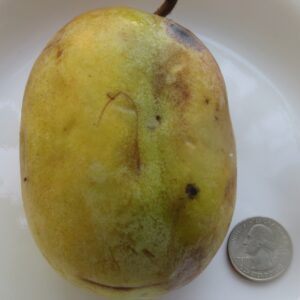
Al Horn (a.k.a. “Al Horn Whiteflesh”)
$64.99 – $124.99 -
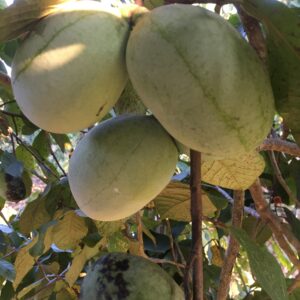
Honeydew
$64.99 – $124.99 -

IXL
$64.99 – $124.99 -

Jerry’s Big Girl (JBG)
$64.99 – $124.99 -

KSU Atwood™
$64.99 – $124.99 -
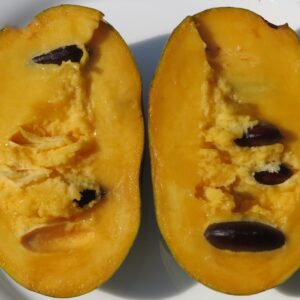
KSU Benson™
$64.99 – $124.99 -

KSU Chappell™
$64.99 – $124.99 -

KY Champion™
$64.99 – $124.99 -

KY Legend (“Titan”)
$64.99 – $124.99 -

Maria’s Joy (a.k.a. “166-13”)
$64.99 – $124.99 -

Marshmallow
$64.99 – $124.99 -

NC-1
$64.99 – $124.99 -

Nyomi’s Delicious
$64.99 – $124.99 -

Overleese
$54.99 – $124.99 -
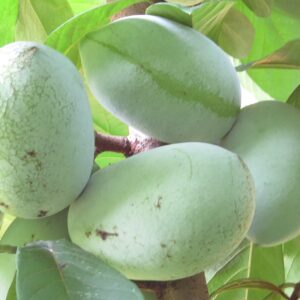
Prima 1216 (“Prima”)
$54.99 – $124.99 -

Prolific
$54.99 – $124.99 -

Rebecca’s Gold
$54.99 – $124.99 -
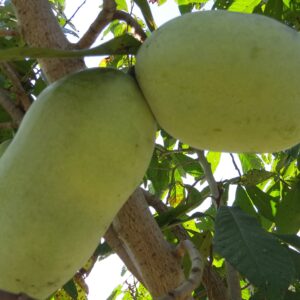
Sunflower
$44.99 – $124.99 -

Taytwo (Taytoo)
$54.99 – $124.99 -

Tropical Treat
$44.99 – $124.99 -

VE-21
$54.99 – $124.99


